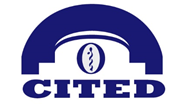Autolytic attempt due to Amlodipine and Valsartan overdose: innovative treatment with insulin infusion. First case reported in Castilla y León
Keywords:
Autolytic attempt, Intoxication, Amlodipine, Valsartan, Calcium channel blocker (CCB), Vasoplegic shock, InsulinAbstract
We present the case of a 61-year-old man with a history of high blood pressure, type 2 diabetes mellitus, and chronic pain who ingested an overdose of amlodipine (250 mg), valsartan (4000 mg), hydrochlorothiazide (350 mg), and diazepam (12.5 mg) for autolytic purposes. The patient developed vasoplegic shock refractory to initial measures, requiring treatment with insulin infusion. After 114 hours of therapy, hemodynamic normalization and complete recovery were achieved. This case highlights the efficacy of insulin infusion in severe calcium channel blocker (CCB) poisoning and represents the first report of its kind in Castilla y León. It also underscores the importance of considering this therapy as part of the therapeutic arsenal in similar cases.
Downloads
References
1. Flores Salinas MA. Intento autolítico y suicidio: Revisión Bibliográfica. Revista Ocronos (Internet). 2022 (Citado 17 de julio de 2024); 5(1): 9. Disponible en: https://revistamedica.com/intento-autolitico-suicidio/
2. Moreno Millán E, Rodríguez Muñoz R, Villegas del Ojo J. Hipotensión grave y prolongada tras sobredosis de candesartán y amlodipino por intento autolítico: primer caso comunicado en la literatura. Rev Toxicol. 2012;29:129-31. Disponible en https://www.redalyc.org/pdf/919/ 91931401009.pdf
3. Abad M, Pauta G, Deleg D. Intoxicación por amlodipino: un recordatorio de las interacciones medicamentosas. Reporte de caso. Rev Indexia (Internet). 2023 (Citado 15 de julio de 2024); Disponible en: https://revistaindexia.com/2023/04/19/intoxicacion-por-amlodipino-un-recordatorio-de-las-interacciones-medicamentosas/
4. Ordoñez Troya CF, González Pazmiño GP, Mora Robles LN, Clavijo Izquierdo ME. Serie de Casos: Intoxicación por Amlodipino. Revista Médica del Hospital José Carrasco Arteaga (Internet). 2020 (Citado 15 de julio de 2024); 12(2): 145-149. Disponible en: https://docs.bvsalud.org/biblioref/2022/11/1222330/627-texto-del-articulo-999-1-10-20210326.pdf
5. Angulo M, Grille P, Albornoz H, Àlvez JI, Bagnulo H. Intoxicación grave por bloqueadores de los canales de calcio. Rev. Méd. Urug (Internet). 2012 (citado 15 de julio de 2024); 28(3): 225-231. Disponible en: http://www.scielo.edu.uy/scielo.php?script=sci_arttext&pid= S1688-03902012000300011&lng=eshttp://www.scielo.edu.uy/pdf/rmu/v28n3/v28n3a11.pdf
6. Campo Barraza JA, Rangel Rivera KL, Rangel Rivera D. Edema pulmonar no cardiogénico posterior a intoxicación con amlodipino. Rev Med Int Méx (Internet). 2020 (Citado 15 de julio de 2024); 36 (6): 876-880. Disponible en: https://www.medigraphic.com/pdfs/ medintmex/mim-2020/mim206q.pdf
7. MedlinePlus. Sobredosis de bloqueadores de los canales del calcio (Internet). Bethesda (MD): Biblioteca Nacional de Medicina (EE. UU.); actualizado 27 ago. 2019 (Citado 15 de julio de 2024); aprox. 5 p. Disponible en: https://medlineplus.gov/spanish/ency/article/ 002580.htm
8. Zegarra J, Meza M, Cornejo C, Porras W, Díaz A, Heredia O. Amlodipino y choque vasodilatado en una unidad de cuidados intensivos de un hospital general. Reporte de caso. Rev Med Hered (Internet). 2017 (Citado 15 de julio de 2024); 28: 101-104. Disponible en: http://www.scielo.org.pe/pdf/rmh/v28n2/a05v28n2.pdf
9. Pitta Villasboa GM, Villanueva Bejarano VD, Ortiz Ayala A. Choque vasopléjico por envenenamiento con amlodipino y losartán. Rev. virtual Soc. Parag. Med. Int (Internet). 2022 (citado 15 de julio de 2024); 9(2): 143-152. Disponible en: http://scielo.iics.una.py/ scielo.php?script=sci_arttext&pid=S2312-38932022000200143&lng=en. https://doi.org/10.18004/rvspmi/2312-3893/2022.09.02.143. http://scielo.iics.una.py/pdf/spmi/v9n2/2312-3893-spmi-9-02-143.pdf
10. Garay Bobadilla DS, Núñez JP, Montenegro Urquieta AM, Motto E, Rivello G, et al. Terapia de insulina y glucosa para el tratamiento de intoxicación grave con bloqueantes de canales de calcio en pediatría. Reporte de un caso. Arch Argent Pediatr (Internet). 2021 (Citado 21 de julio de 2024);119(6): 610-615. Disponible en: https://www.sap.org.ar/docs/publicaciones/archivosarg/2021/v119n6a15.pdf http://dx.doi.org/10.5546/aap.2021.e610
11. World Health Organization (WHO). Preventing suicide: a global imperative [Internet]. Ginebra: WHO; 2014 [Citado 22 de julio de 2024]. Disponible en: https://www.who.int/publications/i/item/9789241564779
12. Levine M, Boyer EW. Antidotes in depth: Insulin for calcium channel blocker poisoning. In: Nelson LS, Lewin NA, Howland MA, et al., editors. Goldfrank’s Toxicologic Emergencies. 10th ed. Nueva York: McGraw-Hill; 2015. p. 1384-1391.
13. Kerns W, Kline J, Ford MD. Beta-adrenergic agonists, calcium channel blockers, and digoxin. In: Tintinalli JE, Stapczynski JS, Ma OJ, et al., editors. Tintinalli’s Emergency Medicine: A Comprehensive Study Guide. 8th ed. Nueva York: McGraw-Hill; 2016. p. 1294-1301.
14. Albertson TE, Owen KP, Sutter ME, Chan AL. The use of high-dose insulin therapy in the management of severe calcium channel blocker overdose. Clin Toxicol (Phila). 2017;55(4):276-283. DOI: 10.1080/15563650.2016.1271362.
15. Greene SL, Gawarammana I, Wood DM, Jones AL, Dargan PI. Relative safety of hyperinsulinaemia/euglycaemia therapy in the management of calcium channel blocker overdose: a prospective observational study. Intensive Care Med. 2007;33(11):2019-2024. DOI: 10.1007/s00134-007-0796-1.
Downloads
Published
How to Cite
Issue
Section
License

This work is licensed under a Creative Commons Attribution-NonCommercial 4.0 International License.









